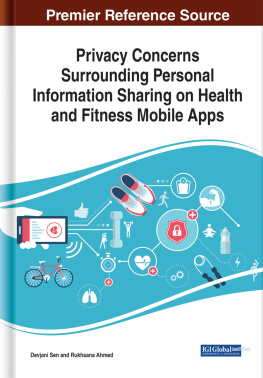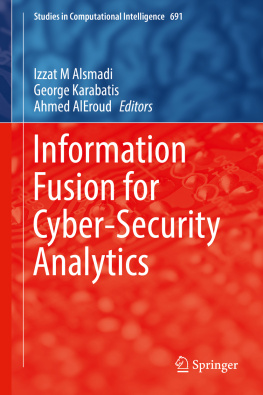
INTRODUCTION
In the years since the terrorist attacks of September 11, 2001, information sharing and fusion efforts have been a central part of both domestic security and attempts to improve national-level military and intelligence performance. This focus can be traced back to the report of the 9/11 Commission, which included improvements in information sharingand the integration of efforts across security and intelligence agenciesamong its recommendations (9/11 Commission, 2004, pp. 416419). Those recommendations catalyzed significant efforts and expenditures, which, appropriately, has raised questions about how to assess what that investment has returned. As resource constraints place increasing pressure on government and security efforts, measuring the effectiveness of those efforts becomes increasingly important so that reasonable tradeoffs can be made. Past assessment methods have not been up to that task, however, necessitating both a reevaluation of what we know about the effectiveness of information sharing and the development of better ways to measure it going forward.
A Decadeand Moreof Information Sharing Efforts
A focus on improved information sharing as a key element of domestic security has persisted in the years since 9/11, and its policy prominence is reflected in the fact that there are now two national strategies that address the issue: (1) the National Strategy for Information Sharing released in October 2007 and (2) the National Strategy for Information Sharing and Safeguarding released in December 2012, which explicitly states that it complements rather than replaces the earlier document. Reflecting the shared responsibility among widely varied organizations and agencies, concerns about information sharing in domestic security relate not onlyperhaps not even centrallyto sharing among different federal-level agencies but also to sharing between different levels of government (federal, state, local, and tribal) and between government and non-government or private entities.
The requirement to wage effective counterinsurgency warfare in both Iraq and Afghanistan similarly focused attention on information sharing and the fusion of intelligence from many sources to make it possible to battle the insurgent and terrorist organizations that were central adversaries in both conflicts (see Lamb and Munsing, 2011, for a review). Activities in those conflicts led to a variety of efforts to promote sharing among intelligence and military organizations and, with members of the interagency involved, linking the resulting shared picture of the conflict to effective operations.
Though information sharing became prominent on the national scene after the 9/11 terrorist attacks, a variety of systems and activities to share security-related information among federal agencies; state, local, and tribal law enforcement; and other organizations existed well before that time. Some terrorism-focused information sharing efforts, such as the FBIs Joint Terrorism Task Forces (JTTFs), were in operation many years before 9/11 (9/11 Commission, 2004, pp. 8182). Systems for sharing criminal-justice data to combat crime have also existed for a long timein some cases, decades. National-level criminal-justice information sharing includes government efforts such as the resources maintained by the Criminal Justice Information Services (CJIS) section of the FBI and the Law Enforcement Online (LEO) system. The Regional Information Sharing System (RISS) links criminal-justice organizations in all fifty states through six regional sharing centers and has been in existence for more than 30 years. High Intensity Drug Trafficking Area multijurisdictional task forces (among other efforts to address violent crime and drug-related activities) were established starting in 1990 to synchronize drug-enforcement activities across agencies, including fosteringeven forcinginteragency information sharing (see Russell-Einhorn, Ward, and Seeherman, 2004). Recent efforts to expand these information sharing infrastructures (e.g., the development of the FBIs N-DEx system), while occurring in an environment where concern about terrorism is prominent, are also focused on improving broader criminal-justice performance (ISE, undated; Sandler, 2010). Finally, extensive standards efforts, including the Global Justice Information Sharing Initiative (GLOBAL) and the National Information Exchange Model (NIEM), are aimed at making law enforcement information systems more interoperable and therefore facilitating the sharing of information among them.
The post9/11 focus on information sharing catalyzed many changes in agency activities and behaviors and the creation of new programs and systems to improve national capabilities to battle terrorism and address the challenges inherent in modern counterinsurgent warfare. At the federal level, a significant initiative focused on the sharing of terrorism-related informationthe Information Sharing Environment (ISE)was implemented, along with a variety of other information technology-based efforts to improve links among different organizational entities. Interagency and multiagency task forces were created (e.g., the DHS fusion center program), and existing cross-organizational teams like the JTTFs were expanded or augmented. Organizations like the Information Sharing and Analysis Centers (ISACs) were designed to bridge government and private sector entities. A 2006 survey by the Justice Research and Statistics Association identified more than 100 information sharing systems, from the national level down to the local level, focused on law enforcement alone (Wagner, 2006).
Existing agencies made significant changes in their behavior, shifting from processes and organizational habits that held information close to greater willingness to share their data with others. For example, the FBI described its post-9/11 changes in practice as follows:
Also of great necessity is the ability to share real-time information that allows both the FBI and its partners the world over to cross jurisdictional boundaries and quickly connect the dots when every minute counts. Gone are the days when information was held onto for fears of compromising investigations; the benefits of full and open sharing with our partners has proven time and time again to be more valuable than the close holding of intelligence. (McFeely, 2011)
A central motivator was the perception that the compartmentalization of information for security purposese.g., national-security classification of data with access control based on individuals or organizations need to knowand bureaucratic behaviors that incentivized the hoarding of data for use by the originating organization were central barriers to effective national and domestic security. Participation in such efforts at different levels of government spread and deepened, with available survey data indicating broad uptake at different levels of government. The ISE 2012 Annual Report to Congress indicated that 79 percent and 68 percent of federal agencies surveyed reported participation in JTTFs and fusion centers, respectively (ISE, 2012, p. A-4). An earlier survey of police department participation in information sharing systems (Wagner, 2005) showed extensive participation in at least some interagency information sharing efforts: While most chiefs responding to this survey reported involvement with multiagency information sharing, agencies serving populations over 100,000 are much more likely to be involved than those agencies serving smaller populations. Overall participation was approximately 80 percent for the largest departments and slightly higher for departments serving populations of between 100,000 and 250,000; it fell to just over 60 percent for departments protecting 25,000 and 50,000 people. Respondents to the survey were also generally satisfied with the results of information sharing: Agencies currently involved in data sharing efforts find them valuable; between 65% and 75% of all groups of respondents reported that the effort was very valuable (Wagner, 2005, pp. 1718).












